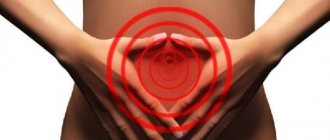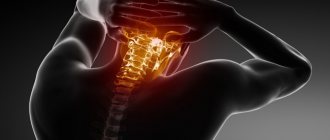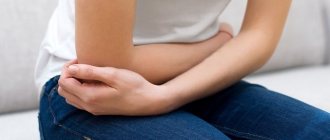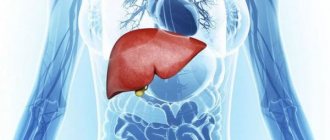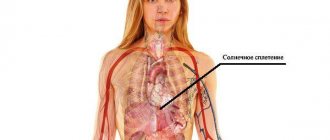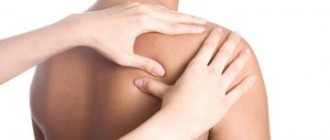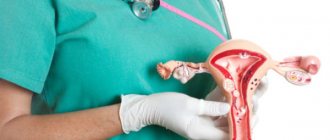Today we will talk in detail about each reason why it hurts and can be painful to step on your heel, as well as how to determine this reason.
There can be many reasons why your heel may hurt and it is painful to step on. From the most harmless, for example, the wrong choice of shoes, to quite serious ones that require treatment and immediate consultation with a doctor. You should be wary if your heel hurts for no reason and it hurts to step on it after physical activity, or vice versa, after sleep. When there is swelling or redness in the area and when it becomes hot to the touch. Also pay attention to burning, tingling, and numbness. If the above symptoms appear, you should immediately consult a doctor.
Causes of heel pain
Many people are interested in why the heel hurts? There are many reasons for this, including the development of diseases. When walking, pain may occur:
- due to excess weight;
- thinning of the subcutaneous layer of the heel area;
- using uncomfortable shoes;
- daily jogging over long distances;
- standing for a long time.
Sometimes the heel hurts when walking under the influence of systemic diseases. One example is rheumatoid arthritis. This is a serious joint disease that can lead to various complications. The pain appears first when walking, then becomes constant.
Another cause is ankylosing spondylitis, when severe pain is felt in the heel bone, making it impossible to stand. Pathology can also occur due to the accumulation of uric acid salts, which cause acute sensations and swelling.
Sometimes discomfort is not associated with any specific problem, but against the background of psychological problems. The pain in this case is real, but has no physiological pathologies.
Among the prerequisites are infectious diseases:
- Reactive arthritis. Provoking factors are infectious diseases with a latent form.
- Tuberculosis of bone. Purulent formations appear, the bone substance loses its properties. This causes foot deformity and lameness.
- Osteomyelitis of the heel. It consists of inflammation of the constituent areas of bone tissue.
The prerequisites may also be traumatic in nature. In such situations, we are talking about tendon stretching and rupture, bruises in the heel area. In the latter case, the connective tissues also become inflamed. With fractures, deformation of the foot is noted and bruising appears.
When it comes to heel pain, the causes and treatment are closely related. The doctor makes prescriptions after conducting research, collecting anamnesis and studying symptoms.
The main cause of foot pain in children is Schinz's disease. It was noticed that girls often have heel pain up to the age of eight, and boys - up to 10. The main symptom of the disease is pain, which is localized on the back surface of the heel. This pathology leads to persistent disturbances in blood supply to the bone tissue of the foot.
In childhood, diseases can also be associated with flat feet. If you do not begin to correct the problem in a timely manner, there is a high probability of curvature of the spine, which provokes pain.
Treatment
Treatment is prescribed by a doctor only after receiving the results of all examinations. It is carried out only with an integrated approach, which includes:
- Taking medications.
- Physiotherapeutic procedures.
- Attendance at therapeutic gymnastics events.
In the most advanced cases, surgical intervention .
Drug therapy is central to the treatment of heel pain. Any doctor first prescribes NSAIDs: Diclofenac , Ibuprofen , Naproxen , etc. These drugs not only effectively extinguish the source of inflammation, but also relieve pain to some extent.
When the onset of pain was preceded by a bruise or other injury, topical agents can be used: gels, ointments and creams. Usually these are Fastum-gel , Viprosal , Finalgon .
When pain cannot be relieved by taking medications, an intra-articular block can come to the rescue. As a rule, such an injection involves the introduction of non-steroidal anti-inflammatory drugs directly into the synovial cavity of the heel.
Shock wave therapy is most often prescribed as a physical therapy procedure for heel pain. Electrophoresis is also very effective.
If the cause of the pain is an injury, then any doctor will prescribe the wearing of special fixing devices to prevent the injury from worsening.
In all cases, it is recommended to take a parallel course of vitamins B and D3 . You should also add as many fresh vegetables, fruits and calcium-rich foods to your diet as possible.
Types of heel pain when walking
There are several types of foot pain:
- Aching. This pattern of soreness is often associated with rapid weight gain. Often found in pregnant women who wear high platforms or heels. The cause of aching pain in the heel can be a disease such as fasciitis. This is an inflammation of the ligaments that hold the bones in the correct position.
- Spicy. Occurs when a bone is broken in the heel or severe bruises.
- Pulsating. Occurs against the background of the development of a bacterial or fungal infection.
- Pulling. It can be either temporary or temporary. Appears when there is a violation in the ligaments or inflammatory processes.
In pregnant women, heel pain when walking may appear an hour after the start of movement. It often appears in the evening and goes away after childbirth. Sometimes a pregnant woman does not experience discomfort, but after delivery it becomes very difficult to walk. The doctor may suspect lumbar nerve damage.
If your foot hurts after sleep, you can assume the appearance of a spur. It sometimes begins to bother you at night, causing insomnia.
The heel is swollen and it hurts to step on it
A situation in which the heel not only hurts, but also looks swollen, in most cases turns out to be heel bursitis . This disease most often results from injury to the foot. With bursitis, a special joint capsule containing synovial fluid is damaged. Sometimes the diagnosis is accompanied by a serious infection, and the tumor rises much higher than the sore point. In some cases, this painful swelling reaches the knee area.
Bursitis is quite difficult to diagnose, but treatment involves the complete elimination of inflammatory fluid and the removal of individual symptoms: redness, swelling, pain.
Diagnostics
At the initial appointment, the doctor conducts a general examination. An x-ray is sufficient to identify an injury, spur or fasciitis. If the left or right heel hurts, ultrasound can be used. It allows you to identify the inflammatory process in tissues and the presence of formations.
These methods are not effective in all cases. MRI is used to identify problems related to the Achilles tendon. If systemic diseases are suspected, the attending physician may involve highly specialized doctors. For example, to detect rheumatoid arthritis, a biochemical blood test is prescribed. It is also needed if diabetes is suspected.
Which doctor should I contact?
If the pain in the heel area does not go away for a long time and causes concern, you should definitely consult a doctor - a traumatologist or orthopedist. If there are no such specialists or it is difficult to get to them, a therapist will help. If necessary, he will refer you to specialized specialists - oncologist, surgeon, neurologist, rheumatologist or infectious disease specialist.
To find out why pain occurs, instrumental and laboratory tests are prescribed. X-rays are quite informative, but in some cases a more detailed examination using MRI, CT or ultrasound is required.
Laboratory diagnostics may include a general and biochemical blood test, blood tests for rheumatic tests and a glucose test. For bursitis, a puncture is performed to remove pathological contents and administer medications.
Treatment for heel pain when walking
After identifying the cause of heel pain, medication, surgery, or traditional treatment may be prescribed. In any case, you should limit the mobility of your leg and try to walk less until complete recovery.
Pain in the right heel or left can be eliminated with an ice massage, which is replaced by heating. In the first days, it is recommended to do this procedure up to 4 times a day. The total exposure time can last up to 7 minutes.
If your heel hurts after running, use instep supports or special heel pads during exercise. They are sold in pharmacies and allow you to relieve the stress that occurs on the affected area.
You should definitely seek medical help if:
- symptoms do not go away within a week;
- there is swelling in the foot area;
- in addition to pain there is numbness;
- every movement leads to the spread of discomfort throughout the entire limb.
Medicinal effects on heels
If the heel bone hurts when walking, external treatments can be prescribed: various ointments, gels and creams. Among the effective means are:
- Ketorol. The composition contains a component that quickly relieves inflammation. The product can be applied three times a day.
- Indomethacin. Suitable for both pain relief and after surgery. The advantage is that the product is not absorbed into the local bloodstream.
- Betadion. Helps with diseases such as gout, arthritis, heel spurs. Do not rub the product until completely absorbed. After application, a thin film of the drug remains on the surface of the dermis.
Complex treatment
Regardless of the disease, a comprehensive approach is recommended. Suitable for this:
- mud applications;
- baths with minerals;
- injections of drugs.
If you focus on only one type of treatment, the likelihood of a systemic effect decreases. If your legs hurt above the heel or the foot itself, your doctor may prescribe steroid injections. They are effective if conservative methods do not produce the desired result.
In addition, shock wave therapy can be used. The effect is achieved through the use of special equipment. It uses high-energy sound waves through the skin in the painful area of the foot. Effective methods are UHF, laser treatment and magnetotherapy. To ensure a faster recovery, it is recommended to carry out therapeutic exercises, focus on massage sessions and swimming.
Traditional medicine methods for treating heels
If you understand exactly why your heels hurt when walking, you can choose the most convenient treatment method for yourself. If there are spurs or cracks that lead to pain, baths with furatsilin help. The procedure will require 2 tablets, a little apple cider vinegar and honey. Feet should be steamed for 20-30 minutes. After steaming, a clay cake is applied and wrapped in cloth.
Black radish relieves inflammation and swelling in the heel area. It needs to be grated. Compresses are applied throughout the night. The course of treatment is selected individually until symptoms are completely eliminated. The same effect helps if there is pain above the heel.
You can buy cinquefoil tincture at the pharmacy. It must be drunk three times a day for 20 days. To prepare the solution, take 1 tablespoon, which is diluted in 1/3 glass of water. If necessary, the course of treatment can be repeated.
Make your own walnut infusion. The product is prepared with 20 gr. chopped nuts poured with a glass of vodka. This mixture should sit for 10 days. After which the 10% medicine is drunk 1 large spoon three times a day.
If you are unsure why your heels hurt after a long walk, the problem may be due to a fungal heel infection. To eliminate discomfort, the area is treated with potassium permanganate or iodine solution twice a day.
In case of severe and nagging pain, a compress with propolis will help to cope with the problem. Gauze is soaked in the infusion, and polyethylene is placed on top. The leg should be wrapped in a warm scarf. After 20-30 minutes, the compress is removed.
Many heel injuries are accompanied by heat and swelling. Cabbage leaf showed high efficiency. It must be pierced with a fork in several places at once, then bandaged to the leg.
Other foot treatment methods
It was mentioned above that pain in the heel area can occur with fasciitis. It is treated using a wide range of approaches. You may have radiation therapy. A good effect is achieved through the use of a special splint, which is applied overnight. This approach allows you to keep the Achilles tendon in the desired position.
If the illness associated with pain in the heel area does not go away for more than a year, and all other treatment methods have proven ineffective, surgery is used. It is also needed to remove spurs from the heel bone.
Physiotherapy
- Place your feet on the surface one after the other. Your palms should rest against the wall. Make sure your sore leg is at the back. Start squatting slowly, focusing on your healthy limb. This should be done until you feel that the muscles behind the lower leg are stretched.
- Stand on a slight elevation so that your heels hang down. Begin to rise onto your toes, returning to the starting position. The procedure is repeated 15 times.
- The next exercise is done with a rolling pin or bottle. They are placed on the floor, with their feet placed on top. Start rolling the bottle so that the entire arch of your foot is involved.
Causes of pain that do not require treatment
- Constant overstrain of the foot, which occurs when wearing shoes with very high heels for a long time
- Thinning of the layer of subcutaneous fat in the heel area in those cases, your physical activity has increased sharply
- Staying on your feet, without the opportunity to sit down and give your legs a rest, for the whole day
- Rapid weight gain
On our website you can find out everything about why it hurts to step on your heel, and how to treat a possible disease
Prevention
Follow preventive measures:
- Give your feet a good rest. They should not be overloaded.
- It is not recommended to walk on the floor barefoot. Slippers should have a soft back and good arch support. Sports style shoes are more suitable for street walking.
- If you have flat feet, then purchase special insoles. To achieve a therapeutic effect in children, special shoes are used.
- Try to reduce your weight to normal values. This will reduce the constant load on the foot.
The fewest foot problems occur in people who engage in moderate physical activity. Give preference to quiet cycling and water procedures.
Thus, there are a sufficient number of diseases that can lead to pain in the heel area. Despite the large number of treatment methods, it is worth focusing on those that eliminate the root cause of the disease.
Painful feeling in the heel after waking up
Pain in the heel area is not a common occurrence; it usually occurs immediately after waking up and taking the first steps. Painful sensations can vary in intensity from weak aching to dull sharp ones, during which it is almost impossible to walk fully, only on tiptoe. The pain either subsides or comes with renewed vigor. It usually appears after prolonged sitting or lying in bed.
The main cause of this syndrome is called plantar fasciitis. The disease is insidious, characterized by inflammatory and degenerative changes in the heel bone, gradually the disease spreads to fasciitis connective tissue, causing unbearable pain and suffering.
Plantar fasciitis develops due to the following reasons:
- excessive stress on the foot as a result of physical exercise or prolonged periods of wearing high-heeled shoes;
- a sedentary lifestyle, for example, frequent sitting or standing in one position leads to the formation of stagnant processes in the vessels and veins;
- rapid obesity;
- pathological flatfoot, in which the arch of the foot shifts and drops.
Untimely treatment or deliberate delay in the diagnostic process most often leads to the formation of calcium-salt deposits, which are called heel spurs. It is the heel spur that causes pain in the heels, especially in the morning.
Heel spur
Heel pain in the morning can be caused by a heel spur, also called plantar fasciitis. This disease occurs due to the development of inflammation in the muscular layer, next to the heel bone. This occurs due to severe stress on the foot or due to injuries and damage to the fascia. The appearance of a spur or bone growth is accompanied by pain, especially in the morning and while walking; usually pain appears only on one foot - on the left or right. Unpleasant sensations increase after a night's rest, so in the morning, while running and walking, it becomes very unpleasant and painful to step on the foot. With this disease, pain symptoms disappear when the person disperses.
Why does the heel on my left foot hurt inside?
The inside of the heel may hurt due to infectious diseases. Among them, reactive arthritis is the most common. The pain does not depend on the load, intensifies at night.
Osteomyelitis is a purulent-necrotic process developing in the bone. First the muscles hurt, then the temperature rises, but the pain in the heel is present from the first day. This is the answer to the question of why the heel on the left foot hurts inside. Purulent destruction of the bone occurs, which is why the pain is localized inside the heel. It is aching, dull, constant, appears after 3-4 days, and lameness quickly follows. The heel is slightly swollen.
What else causes pain in the heel of your left foot? The reason may be very serious. In particular, bone tuberculosis, in which pain inside the heel is permanent. If left untreated, a fistula with pus forms in the bone. Some areas of the skin become dead. Important! Treatment results in long-term remission of the disease.
One of the most common reasons for heel pain is a callus. It can be bone and plantar (pinus). Plantar calluses occur as a result of intense and prolonged friction of the heel on the shoe. It looks like a yellowish lump. Pain occurs only with infection or inflammation. Callus causes sharp and unbearable pain. Treatment is only surgical.
Traditional methods
When discomfort in the heels occurs after sleep and during the day, many are in no hurry to consult a doctor and try to overcome this problem on their own. There are several folk methods to reduce discomfort in the heels, but if they are not effective, then you need to consult a qualified doctor. Among the traditional methods are:
- warming the feet;
- taking foot baths with salt;
- rubbing the feet.
Warm sore feet with hot pepper, which should be poured into a sock. In addition, it is necessary to make an iodine grid. It is advisable to do this throughout the day. Salt baths should be taken hot, 300 g should be dissolved. salt in a liter of water. However, if a person has osteoporosis or a foot injury, then baths with salt should absolutely not be taken. Rub the sore spots with a tincture of dried lilac and vodka. You need to take vodka and lilac one to one and leave for ten days. You can spread garlic paste on the sole. The following method is also often used. For ten days, a raw egg is placed in 200 grams. vinegar essence. After this, the egg is peeled and ground, 30-40g is added to it. oils This ointment should be applied to areas where there are unpleasant sensations before going to bed. The next method is to use hot potatoes boiled in their jackets, which you need to knead with your feet until the potatoes cool down. After this, the feet are washed with heated water.
Causes of heel pain
The heel is a bioshock absorber, thanks to which human upright walking became possible. In addition to fatty tissue, it is surrounded by muscles, ligaments and tendons. Why does the heel of my left foot hurt? Despite its enormous load-bearing capabilities, the integrity of the bone can be compromised. This can be caused by intense physical activity, poor nutrition, injuries to the foot and surrounding tissues, and inflammation.
Important! The deformation of the heel does not go away without a trace, the spine and other joints begin to suffer. If left untreated, the heel itself begins to cause severe discomfort and limits motor activity.
Diseases caused by infection
Tuberculosis of the skeletal system
This infectious disease also affects the heel bone, which leads not only to severe pain, but also caseous necrosis of the bone tissue inside the heel. In the absence of adequate treatment, a fistula is formed, which tends to periodic remission and re-inflammation with the release of purulent contents from the bone (see how tuberculosis is transmitted).
Osteomyelitis
This pathological condition is characterized by the fact that necrosis occurs inside the bone, caused by purulent melting of tissues due to the proliferation of microorganisms. The disease is characterized by both general (body temperature up to 39 degrees, general weakness, loss of body weight) and local symptoms (fistula in the heel bone, releasing a significant amount of pus to the outside). The heel is swollen, and the venous vessels above it are sharply dilated due to compression by pasty tissues. Read more about the symptoms and treatment of osteomyelitis.
Manifestations of arthritis
Unpleasant sensations in the heel area can be caused by rheumatoid or reactive arthritis. Rheumatoid pathology is considered the most dangerous disease, since it is autoimmune in nature. This means that the immune system identifies its own cells as foreign inclusions and tries to destroy them. The result of this action is the constant presence of an inflammatory process in the attack zone.
It is this reason that causes severe pain in the heel bone area. The process is accompanied by destruction of bone tissue and further damage to the lower extremities.
Read on our website
Pain in the foot near the heel Pain in the foot near the heel can occur for various reasons. An experienced doctor can identify some of them by…
As for the reactive form of the disease, it is infectious in nature. The reasons for its occurrence lie in the presence of a viral infection in the body. In addition to acute pain, reactive arthritis may be accompanied by redness of the skin and swelling of the tissue in the affected area.
Arthritis is manifested by the following main symptoms:
- temperature increase:
- acute pain in the area of the inflammatory process;
- state of apathy;
- stiffness of joint joints;
Treatment of rheumatoid and reactive arthritis consists of prescribing antibacterial therapy for the reactive type and antirheumatic drugs for the rheumatoid form. Also, to relieve the patient from pain, you will need to take painkillers. It may be necessary to prescribe anti-inflammatory and glucocorticoid drugs.
In addition to drug therapy, the patient is recommended to have functional rest, and after the symptoms of the acute period have subsided, physiotherapy is prescribed.
You can read more about the treatment of arthritis of the leg joints in the article located at the link.
Localization of heel inflammation
During the formation of purulent foci in the heel structures, the localization of the pathological process plays an important role. Inflammation is diagnosed according to 4 clinical criteria - redness, swelling, pain, limited heel support.
- Bone tissue . Inflammation occurs as a result of tuberculosis, osteomyelitis or cracks in the heel bone. Rapidly developing arthritis, epiphysitis and osteochondropathy can provoke purulent foci.
- Subcutaneous fat tissue . Cavities with pus in the subcutaneous fat occur after severe bruises, vascular damage due to diabetes mellitus. Considering the anatomical features of the fiber, one can suspect the development of almost all joint diseases of the foot.
- Synovial bursae. Inflammation of the articular synovial bursa in clinical practice is called bursitis.
- Fascia and ligamentous apparatus . The lateral ligaments of the ankle are predominantly susceptible to destructive-dystrophic processes and inflammation. The main reasons: blows, bruises, as well as any damage of a traumatic nature.
- Achilles tendon . Almost 56% of all clinical cases with localization of the pathogenic focus in the heel are associated with the Achilles tendon. Sometimes it hurts above the heel due to the tendency of the pathological process to generalize to the ankle joint.
Read also: Toe hurts when bending
Important! The choroid and nerve plexuses are also an area of frequent inflammation in the heel area, which explains the picture of intense pain when stepping on the foot or at rest of the patient. Only a doctor can determine inflammation based on data from instrumental and laboratory studies.
Video - Heel spur
Inflammatory diseases
Plantar fasciitis (heel spur)
It is characterized by pain of inflammatory origin, in the projection of the heels, due to stretching or prolonged damage by a growth of the plantar fascia of the heel bone. This pathology occurs due to prolonged standing, injury to the bones of the foot or flat feet. The course of this disease forms a pathological circle, that is, the inflamed fascia participates in the formation of a bone growth (osteophyte) on the heel, and the latter, constantly injuring it, does not allow this process to subside. Due to this, the heels of such patients hurt constantly and without phases of remission. The pain syndrome subsides only after treatment of the heel spur is undertaken, and then not for long. Heel pain is especially pronounced immediately after sleep, as well as after walking or running.
Achillitis (inflammation of the Achilles tendon)
The inflammatory process in this anatomical formation occurs as a result of constant stress on the calf muscles (climbing mountains, jumping), wearing uncomfortable, compressive shoes and walking in high heels. The disease is characterized by pain in the projection of the tendon, and along its entire length. In addition, pain above the heels of moderate intensity and swelling of the tendon itself inevitably occur. In the absence of treatment and reduced immunity, purulent inflammation of the Achilles tendon can occur, then the pain above the heel becomes more intense, to the point that the person cannot take a step. In addition to this, inflammation can reach such a level that tendon rupture may occur. This condition requires emergency medical attention.
Osteochondropathy of the calcaneal tuberosity
The essence of this pathology is that, for unknown reasons, sterile necrosis begins to develop in those areas of the spongy substance of the heel bone that bear the greatest load. A characteristic symptom is pain that occurs in the heel with the slightest load. Walking with such an illness brings the patient severe pain, which is almost not relieved by anything. Patients move only with the help of crutches or a cane, stepping only on the forefoot. The skin over the heel is swollen almost all the time and shows signs of malnutrition (atrophy). Over time, atrophy of the lower leg muscles occurs.
Bursitis in the heel bone
This pathological condition is manifested by classic symptoms of inflammation, namely: swelling, pain, dysfunction, increased local temperature, redness.
Load periostitis
This disease is characterized by inflammation of the periosteum due to excessive stress. Often this pathology occurs in track and field athletes and weightlifters. Pain in the heel and inflammation of the periosteal substance stops a few weeks after stopping the load.
Causes of painful manifestations in the heel area
Posterior Achilles bursitis
Heel pain is caused by posterior Achilles bursitis, a disease that manifests itself as inflammation of the subcutaneous or retrocalcaneal bursa (the area between the Achilles tendon, skin and heel bone).
At the initial stage, the disease is latent and is characterized by a slight compaction at the junction of the edge of the heel of the shoe with the skin. Accompanied by the accumulation of fluid or pus at the site of the disease, as a result of which the motor activity of the joint is disrupted. This compaction does not cause discomfort at the first stage.
More often the heel hurts in the morning, and also if you try to rise on your toes. Later, erosion occurs at the site of compaction. After a few months, it develops into a pink-red formation, shaped like a cyst, 1-3 mm in diameter, accompanied by severe pain. During an exacerbation, the heel swells greatly, more in the back, acute throbbing pain occurs when walking, the temperature may rise to 400, and the tendon ruptures.
Treatment of Achilles bursitis depends on the degree of the disease and always consists of three main stages:
- Relieving inflammation;
- Restoration of cartilage and bone tissue;
- Prevention of repeated inflammatory processes.
Depending on the type of disease, treatment is carried out:
- The initial stage does not require special drug treatment. It is enough to change your shoes to looser ones, and also apply compresses of dimexide diluted with water in a 1:1 ratio several times (at night). You can use traditional medicine: a compress of grated horseradish or black radish (grated with the peel, wrapped in gauze and applied to the heel for 6 hours).
- In the acute form, medications are prescribed that have antipyretic, anti-inflammatory, and analgesic effects; antibiotics and joint injections.
- In the chronic course of the disease - cleansing the synovial bursa from accumulated fluid, washing with antiseptic agents through surgical intervention, treatment with conservative medications, as in the acute form.
- For purulent Achilles bursitis, puncture and cleansing of the wound, removal of the mucous bursa and part of the bone are required.
It is possible to apply plaster to the affected area in order to protect the problem area from external mechanical influences.
During the preventive period, you need to change your shoes: wear looser ones and low heels (high heels provoke bursitis), possibly without a backdrop. A piece of felt fabric or rubber or special orthopedic inserts are placed under the heel, thus reducing the pressure of the shoe on the sore area.
Plantar fasciitis
Plantar, or plantar fasciitis, is an inflammation of the plantar ligament that connects the heel to the metatarsal bones. It occurs due to its systematic overvoltage. This ligament is the strongest in the body. Increasing stability when walking and strengthening the foot are the main functions of this ligament (fascia).
The main causes of inflammation of the fascia:
- Heavy weight loads;
- Staying on your feet for a long time every day;
- Curvature of the foot inward (pronation), with the shoe trampling from the inside;
- Both high arches and flat feet;
- Various joint diseases (arthritis and arthrosis);
- Poor blood supply to the foot.
Heel spur
This is a consequence of untreated planetary fasciitis. A disease that looks similar to Achilles bursitis, in which the heel also hurts when walking. It is characterized by a bony protrusion at the back of the heel area in the form of a spike-like or hook-shaped growth. There are no quick ways to get rid of heel spurs. However, patience and compliance with all the doctor’s requirements eliminate this unpleasant illness.
In treatment, complex therapy of anti-inflammatory non-steroidal drugs using external ointments and gels (ibuprofen, naproxen) and physiotherapy is considered effective:
- Shock wave therapy;
- Ultrasound;
- Laser therapy;
- Applications with natural bioactive mud;
- Mineral baths.
Surgical treatment
Surgical intervention is practiced in the treatment of heel spurs if there is no effect of drug therapy. The plantar fascia is excised and part of the bone, spur or sequestrum is removed. The operation can be performed endoscopically or openly.
For fractures in the heel area, a cast is required for 1.5 months. Mobility only with the help of crutches. The forefoot can be loaded only one month after the cast is removed. The rehabilitation period includes exercise therapy, massage, and physiotherapy.
If recovery is slow, the patient wears an orthosis in the form of a boot, which reduces the load on the bone, prevents muscle atrophy, and reduces swelling. The recovery period generally takes 3 months. Even if movements are difficult, doctors recommend working out the leg from the first days of rehabilitation.
Treatment process
Treatment tactics are based on the origin of heel pain. In the majority of cases, treatment is limited to medications, but serious diseases of an inflammatory nature often result in abdominal surgery.
- anti-inflammatory drugs;
- local preparations (liniments, ointments, emulsions, creams);
- immunostimulants;
- joint blockades (for injection relief of severe pain);
- painkillers.
All medications are prescribed only by the attending physician in accordance with the factors for the development of heel pain. Physiotherapy, massage and exercise therapy play an important role in achieving high therapeutic results. To improve the daily support function of the lower extremities and soften the shock absorption of the heel area, you should purchase special orthopedic insoles and arch supports.
Pain in the bone tissue of the heel almost always means the development of some pathologies or defects of various nature. Today, almost all heel diseases are successfully treated, achieving stable remission even with irreversible chronic processes.
Timely contact with specialists allows you to avoid negative consequences for the patient, up to deep disability and complete restriction of mobility of the joints of the lower extremities.
